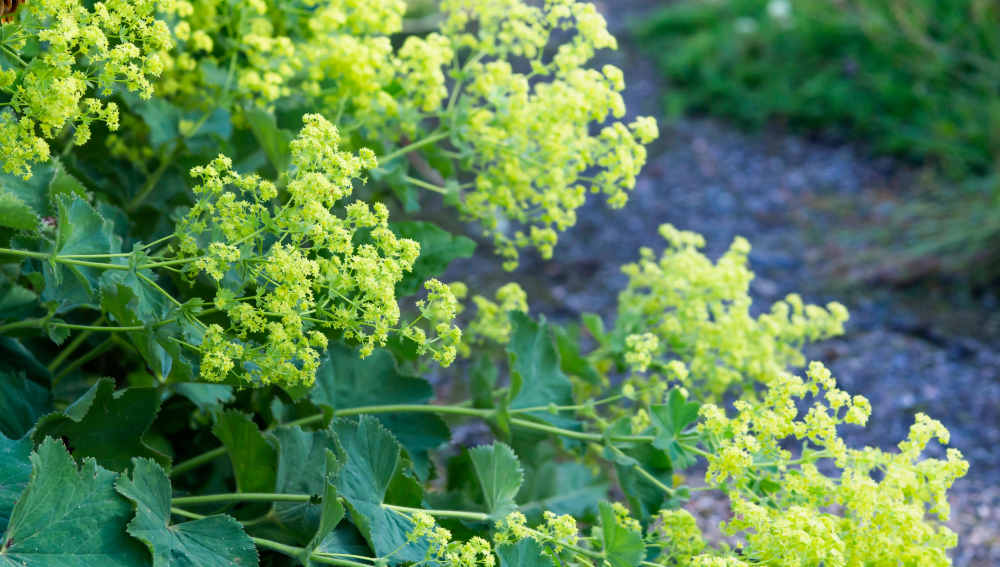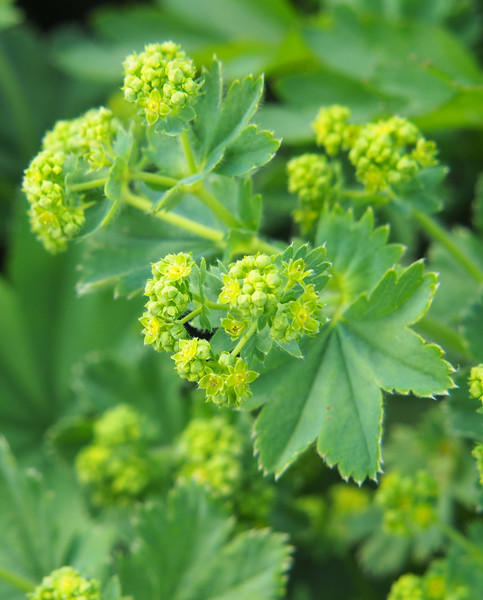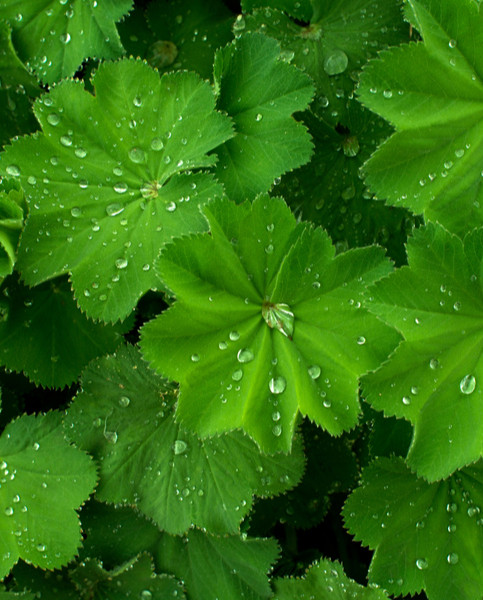How to grow Alchemilla
One of our most popular garden plants, this cottage garden staple is widely grown for its undemanding, adaptable nature and distinctive looks. Also known as lady’s mantle, the low-growing perennial can be recognised for its neat mound of scalloped, silvery leaves; their fine downy coating meaning they glisten with water droplets after rain or a heavy dew. In summer, plants are topped by a frothy spray of zingy, lime-green flowers.
Alchemilla is something of a ‘go to’ plant for many gardeners due to its ability to thrive almost anywhere, and knack of seeding itself about the place beautifully. It tends to remain untroubled by pests or diseases – a truly robust and reliable member of the garden.

Key Information
Soil pH
Position
Hardiness


Where to plant Alchemilla
Alchemilla can be planted at any time of year, though for best results go for autumn or spring. An autumn planting is recommended for those gardening in mild conditions (and broadly speaking, this is the southern half of the UK). For those liable to cold winters, it is better to wait until spring (generally the northern half of the UK). Planting in summer is fine, though be prepared to water regularly.
Popular uses include edging a border or path, or covering ground beneath taller plants or shrubs (you’ll often see alchemilla planted beneath roses). It also grows well along a wall or steps, where it has a lovely way of seeding itself into nooks and crannies. Alchemilla also makes a low-maintenance addition to patio and balcony containers.
How to plant Alchemilla
- For planting in the garden, dig the soil area removing any large stones and weeds and breaking up any lumps. It’s a good idea to mix in some organic matter such as manure or garden compost at this stage, particularly if you have poor or heavy soil.
- Rake level and firm with your heels. Rake level again.
- Water plants well and allow to drain before planting.
- A good tip is to dig a hole twice the size of the root-ball. Fill with water and allow to drain before placing in the plant.
- Place the plant in the hole, ensuring the top of the root ball sits level with the surface of the soil. Too low and the plant may rot, too high and the roots can dry out.
- Backfill with soil and firm in gently with your foot.
- Soak well with water.
- Mulch around the base with well-rotted organic matter.
- For planting in containers, choose an appropriately sized pot with plenty of drainage holes in the bottom. You may wish to grow your alchemilla in a pot of its own (in which case choose one 5-10cm larger than the current diameter of the rootball) or in a larger mixed container.
- If you are using a large or heavy pot, it can be a good idea to fill and plant it in situ to save yourself the trouble of moving once full.
- Use a good quality potting compost with some horticultural grit mixed in and, if not already present (check the labelling on the bag) some slow-release fertiliser granules.
- Start by partially filling the pot with compost; enough so that when placed on it the upper surface of the root ball is about 3cm lower than the top of the pot.
- Fill around the plant with compost, firming down with your fingers then adding a little more so it is held tight.
- Pick up the container (if you can!) and lightly tap on the potting bench or ground a few times to help further settle the compost around the plant.
- Soak well with water.
- A mulch with horticultural grit will look attractive and help to prevent a ‘cap’ or crust forming on the top of the compost (something container plants can suffer due to the artificial nature of their watering).

How to care for Alchemilla
Pruning and Deadheading
If its vigorous self-seeding is likely to be a problem, the flowers of alchemilla can be deadheaded before they have a chance to set seed.
When flowering finishes (usually around July), the foliage can begin to look a little tatty and past its best. If you wish to freshen things up, you can cut the whole plant back at this point and give it a good soak of water to generate a burst of new foliage.
Alchemilla will die back naturally in autumn and regrow the following spring. Try to leave faded foliage intact until spring, as this provides a valuable habitat for overwintering insects. Simply remove it before the new growth emerges.
Watering
Alchemilla in the ground should be given a good watering in on planting, followed by a thick layer of mulch to lock the moisture in (see next section for more on this). Water again a few more times in the coming weeks, after which it should be largely self-sufficient except in prolonged dry spells when it will benefit from a good soaking.
Alchemilla in a container requires regular watering throughout the growing season. To avoid overwatering, a good rule of thumb is to allow the top couple of centimetres to dry out between soakings. To check this, wiggle your finger down into the compost until you feel moisture. Be aware that in the height of summer containers can need watering every day, particularly smaller ones in full sun.
Feeding
On healthy, fertile soil, a mulch of well-rotted organic matter (i.e., a layer of leaf mould, manure, or garden compost applied to the soil around the plant) should provide enough nutrients for your alchemilla. This has the added benefit of suppressing weeds and locking in moisture. Mulch when planting, and then again each year in autumn or spring.
If you garden on poor soil or your alchemilla looks in need of a boost, applying a granular general-purpose feed to the surface of the soil and lightly working in can reap benefits. This is known as a top dress and is best done in spring.
Container-grown plants are different as they rely solely on the gardener for nutrition. Get off to a flying start by making sure you use a good quality compost with slow-release granules mixed in. These generally provide nutrients for around 6 to 8 weeks, after which you’ll need to apply a liquid feed every 2-3 weeks until the end of the growing season (i.e., September-ish).
Remember to repot your alchemilla every few years into a slightly larger pot using fresh compost. When it has reached full size, instead of repotting simply scrape away the top few centimetres of compost and replace with a fresh mix of compost and slow-release granules.
Cold Protection
Alchemilla is hardy and able to withstand even a very cold UK winter without the need for additional protection.
Pests and Diseases
Alchemilla is considered trouble free. Its downy leaves are unpalatable to slugs, snails, deer, and rabbits, making it a good choice where these pests are a problem.
How to propagate Alchemilla
A readiness to self-seed means the easiest way to increase the presence of alchemilla in your garden is simply to leave flowerheads intact until late autumn. If you wish to generate new plants for use elsewhere, the quickest approach is to lift and divide established clumps in early spring or autumn:
- Choose a day when the soil is not frozen or waterlogged.
- Dig the plant out of the ground.
- Shake off any excess soil.
- Separate the plant into sections using either swift, cutting blows with a sharp spade, or two forks inserted back-to-back with tines touching, handles then pushed together to prise the plant apart.
- Discard old, damaged, or surplus pieces, keeping healthy, vigorous material.
- Replant decent-sized pieces where desired, and any smaller bits can be potted up.
- Water well until fully established.
* Many plants carry Plant Breeders Rights and cannot be propagated for commercial purposes.




